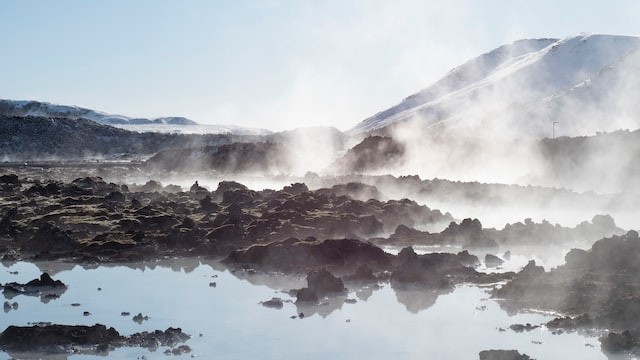The world might have unlimited access to clean energy from rocks heated to 752 degrees just 12 miles underneath the surface of the Earth but getting to them is more than it sounds.
Hot rocks 12 miles beneath the surface reach a temperature of 752F

In a report on a potential breakthrough that was just released, the Clean Air Task Force noted that the deepest borehole that had ever been dug was only eight miles deep, as per Mailonline.
The energy systems could well release water in which the rocks are heated to 752 degrees Fahrenheit, which it would flow to the surface to power generators that could only cost $20 to $35 per megawatt-hour natural gas has skyrocketed to more than $84 instead of the current price of natural gas, which is more than $84.
The team recently carried out tests in Iceland, in which they were able to create five times as much electricity as a typical geothermal well while only drilling two miles due to a volcano.
The advancement of power demonstrations in the 2020s will be a crucial first step toward the commercialization of superhot rock energy.
Read More: Atlas Mountain Range Floats on Layer of Molten Rock
Incredibly powerful geothermal energy
Super-Hot Rock is a method of producing electricity while burying all carbon. Super-Hot Rock harnesses heat from beneath the surface of the earth rather than mining fossil fuels, which release carbon out of its natural condition and into the atmosphere, as per Altarock.
4.5 billion years ago, the earth was a spherical of molten rock, and it has been steadily cooling ever since. Still hotter than the sun's surface, the earth's core is still over 6,500 degrees Celsius.
Around 400 °C (675 °F), a significant threshold is achieved. Unlike hot water or even steam, water has become a supercritical fluid and carries heat more effectively. Additionally, the behavior of the rock, or its mechanics, becomes uniform among rock kinds.
Super Hot Rock is essential to the energy future. Currently, the system successfully incorporates electricity generated by solar and wind sources. It falls short, though.
We must begin to phase out all fossil fuels, including natural gas, in order to totally remove carbon emissions from the electrical system.
This means replacing outdated electricity generation methods with more trustworthy, less expensive clean energy sources.
With an average depth of 20 kilometers, Super-Hot Rock can be found in some places as shallow as 5 kilometers below the surface.
Water is cycled to remove heat from the rock and carry it to the surface as superheated steam. A steam turbine that is connected to a generator subsequently sends the electricity to your house.Only 8 kilometers can currently dug down by drills
The 400-million-year-old granites in New Hampshire and the half-billion-year-old granites in Maine feature ancient tectonic fissures that researchers at FORGE Utah are trying methods to inject water through.
The problem of being able to drill deep enough just to access superhot rocks anyplace on land still exists. The Kola Peninsula of Russia's deepest well ever dug in crystalline hard rock was little under eight miles deep when it was finished in the 1970s.
Drilling deep enough to access superhot rocks on any land remains a problem. When it was finished in the 1970s in the Kola Peninsula of Russia, the deepest ever drilled in crystalline hard rock was little under eight miles deep.
Related Article: Weathering in Mountainous Regions may Act as Thermostat for Earth
© 2026 NatureWorldNews.com All rights reserved. Do not reproduce without permission.





